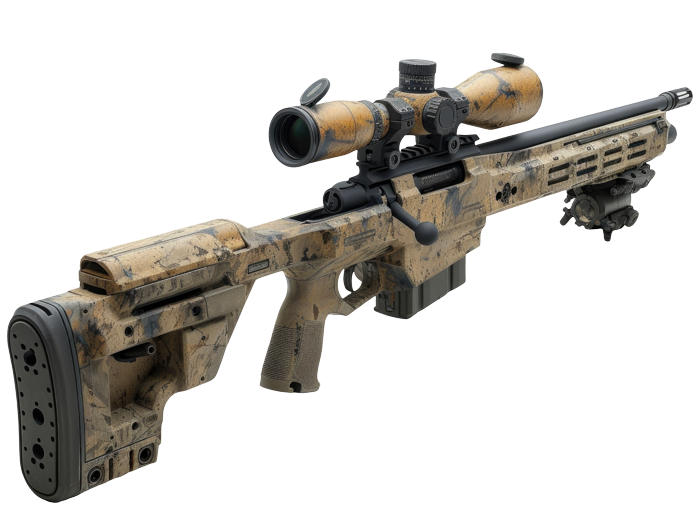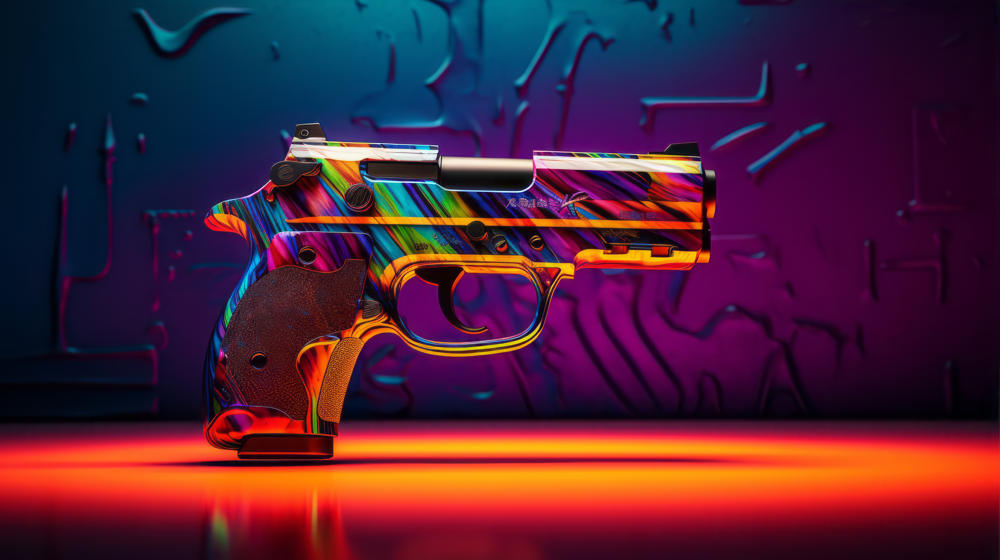Gun owners customize their firearms for various reasons, including personalization, improved performance, functionality, aesthetics, collectability, adaptation for disabilities, and gaining tactical advantages. These modifications cater to individual preferences, needs, and intended uses of the firearm.
Gun customization has undergone a significant evolution over the years, reflecting changing preferences, technological advancements, and diverse user needs. From simple modifications to intricate designs, the realm of gun customization has expanded to encompass various trends and styles. In this article, we’ll tackle the evolution of gun customization, including its trends and styles.
Table of Contents
What Is Gun Customization?
Gun customization refers to the process of modifying firearms to suit individual preferences, needs, or purposes. This may involve alterations to improve performance, aesthetics, or functionality. One aspect of gun customization involves the use of gun wraps, which are adhesive vinyl covers applied to the surface of the firearm. Gun wraps allow for personalized designs, patterns, or colors to be added to the gun’s exterior, providing both aesthetic appeal and potential protective benefits.
The Evolution of Gun Customization
Historically, gun customization has roots in practical modifications aimed at enhancing performance or adapting firearms to specific purposes. Early modifications focused on functional upgrades such as sights, grips, and trigger enhancements to improve accuracy and ergonomics. Additionally, customization played a role in personalizing firearms for aesthetic appeal, with engraved designs and embellishments dating back centuries.
The advent of modern manufacturing techniques and materials has revolutionized gun customization. CNC machining, 3D printing, and advanced coatings have opened up endless possibilities for customization, allowing for precise modifications and intricate designs. High-quality aftermarket parts and accessories are readily available, enabling gun owners to tailor their firearms with ease.
In contemporary times, gun customization trends have diversified. Personalization is increasingly driven by the desire for personalized firearms that reflect individual tastes and preferences. There’s also a growing trend towards functional upgrades aimed at improving accuracy, reliability, and ergonomics. Moreover, with the rise of tactical shooting sports and self-defense applications, customization for tactical purposes is gaining popularity.
Some gun enthusiasts also embrace retro or vintage customization, paying homage to classic firearms with period-correct modifications. Furthermore, unique coatings, finishes, and gun wraps are becoming popular choices for adding flair and protection, which is a common practice for firearm restoration.
Styles in Gun Customization
Styles in gun customization vary widely. Minimalist modifications emphasize simplicity and functionality, with a focus on enhancing performance without excess ornamentation. Tactical customization features rugged designs, advanced optics, and accessories geared towards combat or self-defense applications.
Classic customization pays homage to timeless firearm designs with engraved details, wood finishes, and elegant embellishments. Additionally, luxury customization involves premium materials, intricate engraving, and meticulous craftsmanship, catering to discerning collectors and enthusiasts.
As technology continues to advance, gun customization will likely become even more accessible and sophisticated. Customization trends may evolve to incorporate innovations such as smart firearms technology, modular designs, and customizable electronic interfaces. Moreover, environmental sustainability and ethical considerations may influence future trends, with a growing demand for eco-friendly materials and manufacturing processes.
How to Customize Your Gun
Customizing guns today involves meticulous planning and research. First, determine the purpose of customization, whether it’s for improved performance, aesthetic appeal, or functional enhancements. It’s crucial to research the laws and regulations governing firearms in your area to ensure that the modifications you plan to make comply with local regulations and do not violate any laws.
Choose Your Platform
Selecting the right firearm is the foundation of any customization project. Consider the intended use and personal preferences when choosing the firearm to customize. Brand reputation, compatibility with aftermarket parts, and availability of customization options should be taken into account to make an informed decision.
Identify Modifications
Before diving into customization, identify the specific modifications you want to make to your firearm. Assess areas such as the stock, grips, sights, trigger, and barrel to determine where improvements can be made. Whether you’re focusing on performance upgrades, aesthetic enhancements, or both, having a clear plan will streamline the customization process.
Acquire Parts and Accessories
Once you’ve identified the modifications you want to make, acquire the necessary aftermarket parts and accessories. Explore options such as upgraded triggers, ergonomic grips, enhanced sights, muzzle devices, and rail systems.
Installation
Proper installation of aftermarket parts and accessories is crucial for the success of your customization project. Follow manufacturer instructions carefully or seek professional assistance if needed. Ensure that each modification is installed correctly and functions safely. Test the firearm for safety and performance after each modification to verify proper fit and function.
If you’re not confident in your ability to install aftermarket parts and accessories, seek professional assistance. Improper installation can affect the functionality and safety of your firearm. A qualified gunsmith can ensure that modifications are installed correctly and function as intended.
Finishing Touches
Aesthetic enhancements such as custom finishes, engravings, or gun skins can add a unique touch to your customized firearm. Gun skins, also known as wraps or decals, offer a quick and reversible way to change the look of a firearm without permanent alterations. Clean the surface of the firearm thoroughly before applying the skin, and carefully smooth out any air bubbles or wrinkles for a seamless finish.
Testing and Evaluation
After completing all modifications, thoroughly test the firearm to ensure proper functionality, safety, and performance. Regular testing and evaluation will help identify any issues and ensure that your customized firearm meets your expectations.

Maintenance
Regular maintenance is essential to preserve the performance and appearance of your customized firearm. Clean and inspect your firearm regularly, paying attention to aftermarket parts and accessories for wear or damage. Moreover, replace any damaged parts to maintain optimal performance and functionality.
Legal Considerations
Be aware of any legal restrictions regarding customized firearms in your jurisdiction. Ensure that all modifications comply with applicable laws and regulations to avoid legal issues. Keeping abreast of the legal landscape surrounding firearms will help you navigate the customization process responsibly and lawfully.
Conclusion
The evolution of gun customization reflects advancements in technology, materials, and manufacturing processes. By studying this progression, individuals can gain a deeper understanding of the capabilities and possibilities available in modern firearm customization. Whether for practical purposes, aesthetic appeal, or personalization, understanding the history of customization helps individuals make informed decisions about their own firearms.

